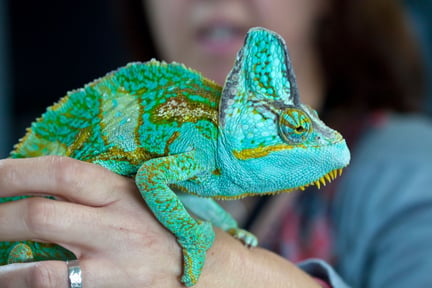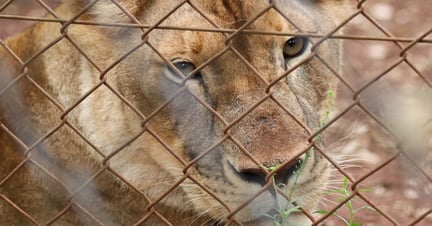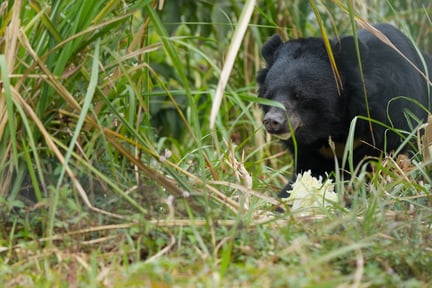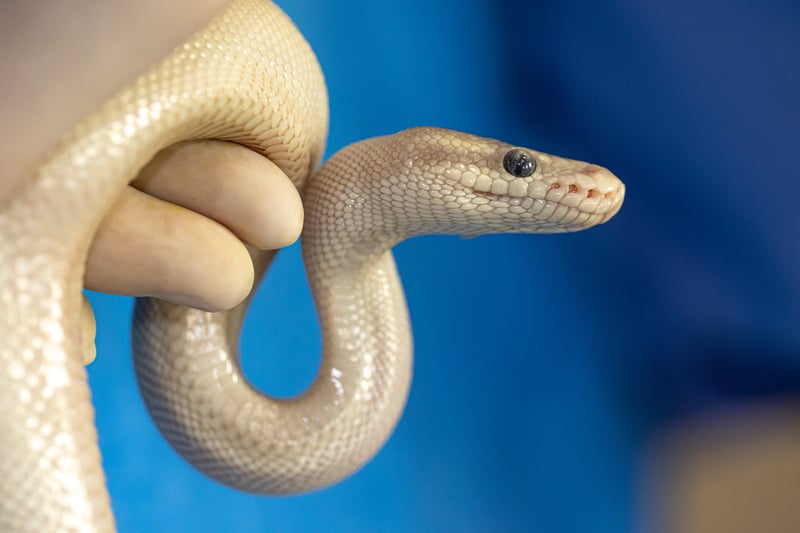
14 interesting facts about pythons
Blog
Silent, strong, and mysterious, python snakes are some of the most fascinating reptiles in the animal kingdom. But their intrigue has made them a popular target of the exotic pet trade. Take a look at the python facts below to learn more about these slithering serpents and how they became Africa’s most traded live animal.
Python snakes are a diverse and delightfully complex family of non-venomous snakes from Africa, Asia, and Australia. With around 40 species — including the largest snake in the world and the most popular pet snake — there’s a lot to learn about these slithering reptiles. Immerse yourself in their world with some amazing facts about pythons.
Discover 14 python facts
1. There are around 40 python species
There are about 40 different species of python that live around the world, and they come in a variety of shapes and sizes.
How long can a python snake grow, we hear you ask? Well, pythons are some of the largest snakes in the world. In fact, the reticulated python is the largest snake on Earth, measuring a staggering 7 metres. The Burmese python isn’t far behind, growing up to 6.5 metres. However, not all pythons are so enormous, as the pygmy python measures just 65 cm.
2. Pythons are found in Africa, Asia, and Australia
Where do python snakes live? You’ll find pythons in the tropical parts of Africa, Australia, Southeast Asia, and the Pacific Islands.
Many python species are terrestrial and live on land, though they’re usually found near water. Others are arboreal or semi-arboreal and live in trees. Pythons thrive in various habitats, such as caves, rainforests, swamps, and grasslands.
Of course, every living creature plays a role in keeping our planet healthy, but why is the python snake so important to ecosystems? As with every native species, they play a critical role in balancing the food web. They keep prey species like rodents, birds, and other reptiles in check, preventing them from becoming overpopulated. This helps to keep the ecosystem stable and maintains a healthy level of biodiversity. Thank you for your service, python snakes!
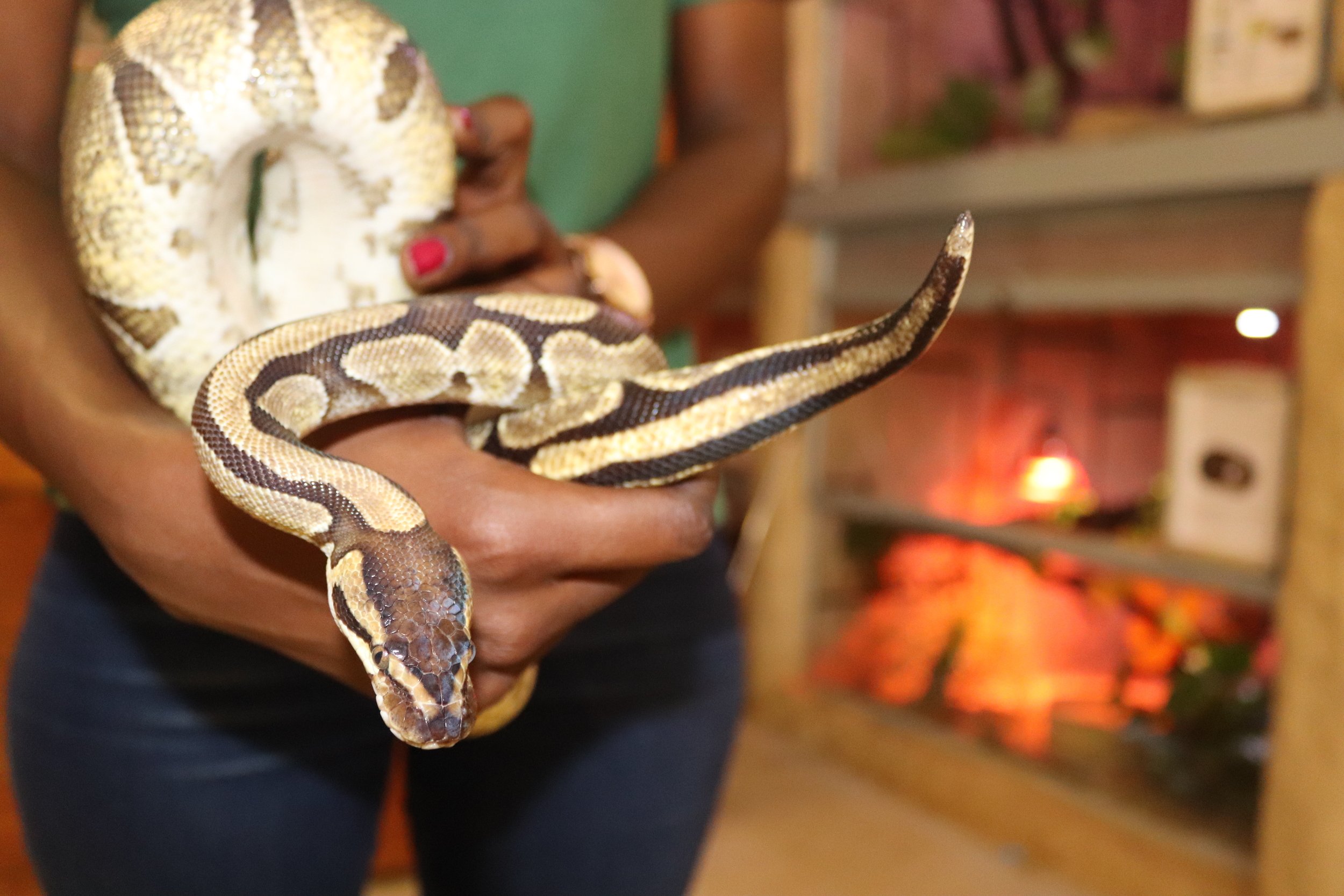
Credit: World Animal Protection
3. But pythons are losing their habitat to deforestation and urban expansion
Unfortunately, there won’t be much of an ecosystem left at the rate of deforestation and urban expansion that we’re seeing.
In upland areas, slash and burn agriculture (a method where forests are cut down and burned to use the land for agriculture) is contributing to the habitat degradation of the Burmese python.
This devastating technique not only harms the local pythons but also eliminates their prey and makes them more vulnerable to human exploitation. As python habitat shrinks, it becomes easier for hunters to find and trade them. The reticulated python is similarly at risk of being hunted as its range dwindles.
The ball python is also threatened by habitat loss (and the pet trade, but we’ll come back to that). Agricultural intensification and pesticide use upset the balance and health of its habitat, making it vulnerable to extinction.
4. Pythons can see in the dark
On a lighter note — or should we say darker note — pythons can see in the dark! Well, kind of.
One of the most interesting facts about pythons is that they can detect infrared radiation. They capture it through receptors in the pits between their lip scales, enabling them to detect heat shadows of animals, even when it’s pitch black. In other words, pythons can detect heat in total darkness.
5. Pythons are excellent hunters
As pythons are some of the largest snakes in the world, you probably guessed that they’re strong hunters.
But one of the lesser-known python snake facts is that they’re actually constrictors. Rather than injecting their prey with venom, they wrap themselves around their prey and squeeze them to death. They monitor their prey’s heartbeat to detect when they’re dead.
This hunting method is intimidating, so you’re probably wondering: are python snakes dangerous? As with most wild animals, pythons can display aggressive behaviour and give defensive bites if they feel threatened. However, python attacks on humans are very rare. You just shouldn’t approach them in the wild.
6. Pythons eat a varied diet
We now know how a python gets its dinner, but what do python snakes eat?
The python diet is carnivorous, typically preying on birds, smaller reptiles, and mammals like monkeys, pigs, wallabies, and antelopes. The size of the python usually determines the size of its prey.
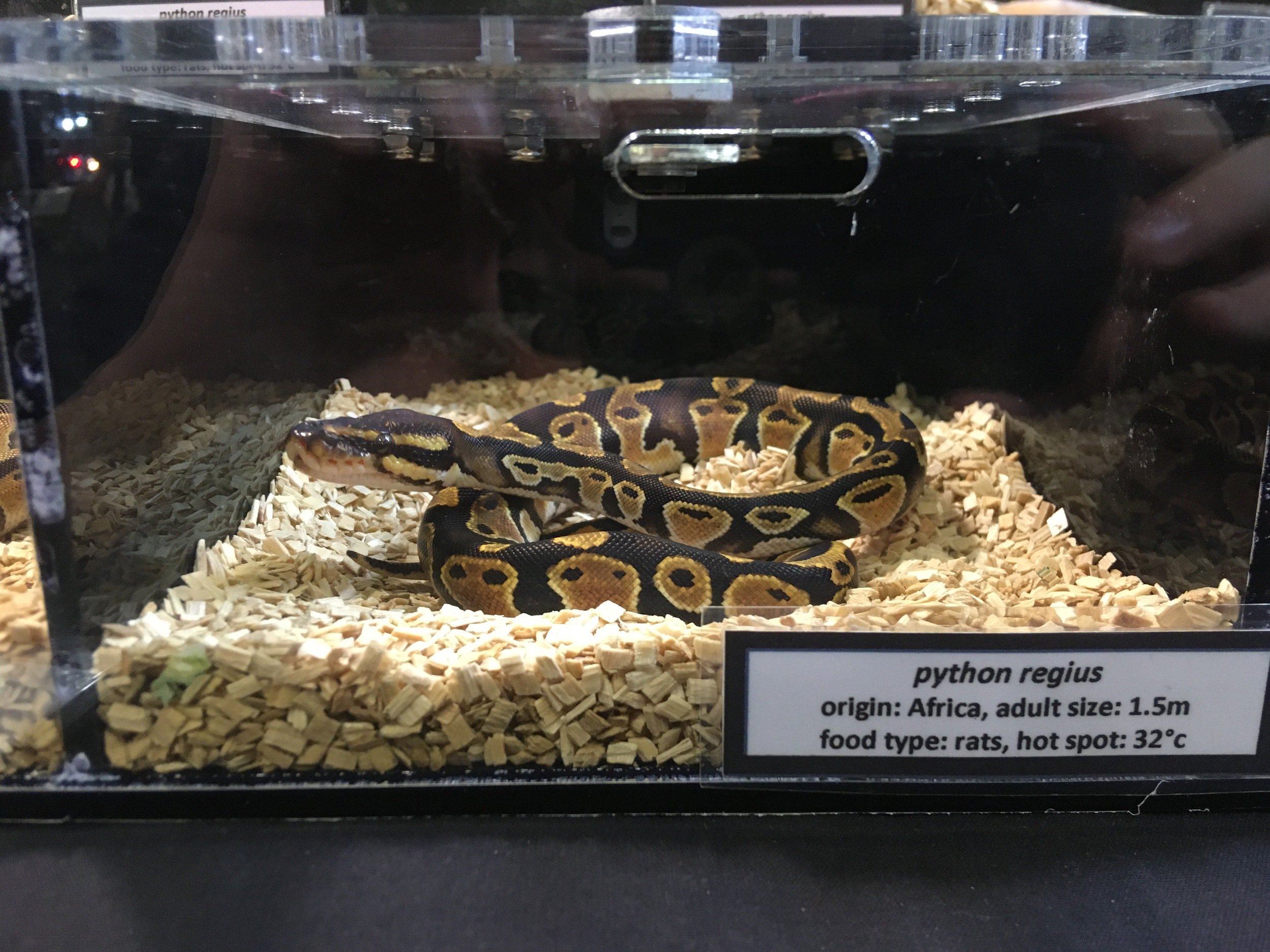
Credit: World Animal Protection
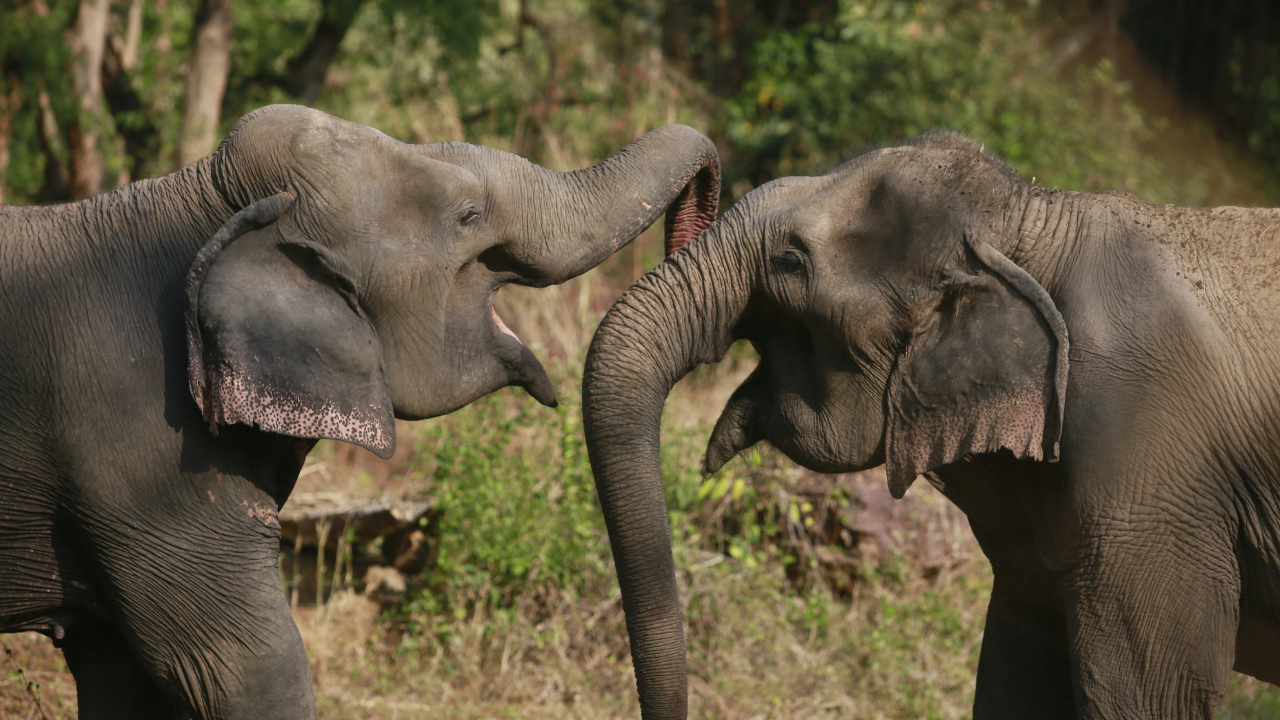
You can make a difference for vulnerable animals
Donate now
When you make a donation, you’ll join a passionate group of supporters who are determined to change the world for animals. We're fighting animal cruelty wherever we find it — are you with us?
Click to donate7. Pythons are Africa's most traded live animal
The ball python, also known as the royal python, is Africa’s most traded live animal — fuelled by high demand for pythons in the exotic pet trade.
More than three million ball pythons have been exported from Africa over the last 50 years, snatched away from their freedom as wild animals to live out the remainder of their days as pythons in captivity.
As soon as it's captured, the python’s life is at risk. The trapping, transportation, and handling of the python is not only incredibly stressful, but it also puts it at risk of contracting an illness or getting injured. And the cruelty doesn’t end there.
Captured pythons are kept in storage for extensive periods before being subjected to intensive breeding. Then, when sold, they’re sentenced to a life confined in a small cage with barely enough room to move. Even in a larger cage, they’re unlike to receive the right amount of water, the right type of shelter, the correct floor material, good hygiene care, enough enrichment, or sufficient places to burrow.
Thankfully, the EU has now banned ball python imports from West Africa. While it won’t help the ball pythons already in captivity or stop the global trade entirely, it marks meaningful progress in recognising the suffering these animals endure — and the urgent need to end the exotic pet trade everywhere.
8. Pythons are sentient beings
Pythons are more complex than you might think. Wild Burmese pythons have all of the necessary capacities to be classified as sentient beings and can experience both pleasure and pain.
They’re also highly intelligent. Giant Burmese pythons, for example, have a strong homing instinct — the ability to return to familiar territory after being displaced. Research shows they can navigate using environmental cues like smells, light patterns, and visual landmarks. A type of navigation that even many humans would struggle with without a map!
While this is one of the fun facts about pythons, it is also a sobering reminder of the cruelty that captive pythons face as sentient creatures. With reptiles being capable of feeling distress, fear, and pain, we can safely assume that the capture, breeding and transport of these intelligent snakes is severely distressing.
9. Pythons don't belong on ranches
As awareness grows around the cruelty of capturing wild pythons, hunters have set up ranches as a supposedly “kinder” alternative. Here, they bring pregnant females, eggs, or young pythons to be hatched and reared in captivity. While some females may be released back into the wild, the hatchlings are often sold into the exotic pet trade
But ranching pythons isn’t as ethical as hunters might have you believe. It’s actually harmful to python conservation. Ranching still relies on removing animals from the wild, exposing them to stressful captive conditions, and undermining conservation efforts by masking the continued exploitation of wild populations. It’s a loophole, not a solution.
Recent research reveals that some hunters target all ball pythons in their hunt, rather than just eggs, young, or pregnant females. Ranchers are also supposed to release the females after their eggs are collected, as well as a proportion of their offspring, but this isn’t being done safely or responsibly. Many of these pythons never know a natural life in the wild.
Life on these python ranches is full of suffering. Ball pythons are often kept in small, unstimulating enclosures, where they can’t even stretch to full length. Devastatingly, the distress caused by captivity can lead to anorexia, and heat lamps can cause serious burns to their skin.
This is the harsh reality for many wild animals bred for profit. Hunters “ranch” pythons and other vulnerable creatures to make money — but at what cost?
10. Or in your home
Pythons aren’t meant to be kept as pets. While hunters and breeders market pythons, especially ball pythons, as “easy, entry-level reptiles”, they actually have complex needs.
As noted above, pythons are sentient beings, requiring enrichment to lead a good quality of life. Beyond that, they need to move naturally, which is impossible in a tank or enclosure in someone’s home. These factors are why a python’s needs will never be adequately met outside of the wild.
One of the most shocking python pet trade facts is that 100% of the 4,855 ball pythons observed at exotic pet expositions in North America and Europe failed to meet the requirements for mobility, shelter, and water.
We are fighting to end the cruelty of the exotic pet and wildlife trade as part of our python conservation efforts. Will you help?
11. Pythons are excellent swimmers
You’ll know from reading above that many pythons live near bodies of water, but can python snakes swim?
Of all the weird python facts, this one may just be the most surprising. Yes, pythons can swim. They’re actually very strong swimmers. The Burmese python can even stay submerged for an impressive 30 minutes!
12. Pythons hug their eggs
You may have heard of the bear hug, but what about the snake hug?
Pythons coil their bodies around their eggs to incubate them and keep them warm. As the air cools, the mother generates heat by shivering, with lots of minuscule muscle contractions. Even after they hatch, the babies tend to stay inside the eggs for a couple more days, while the mother continues to coil around them.
13. Pythons are used as props for entertainment
Have you ever seen a video of a wild animal being rescued? It warms the heart, right? What if we told you that it was staged, with the prey animal purposefully subjected to danger to get a few likes and views on social media?
Sadly, that’s the reality for many of the animals in videos on social platforms like YouTube, Facebook and TikTok, as documented by research from World Animal Protection and other animal welfare organisations. In one clip, a reticulated python is used as a prop to trap a monkey — a cruel act that is unfair to both animals involved.
Pythons are also unfortunately exploited for “selfie tourism”, where people pay to have photos with wild animals as props to share on social media.
Let us be clear. Any physical interaction with a wild animal is unnatural and cruel. If you’d like to admire wildlife safely, there are plenty of World Animal Protection-approved ecotourism activities for you to explore that won’t harm wildlife.
14. Python numbers in the wild are depleting
The number of ball pythons in the wild is declining as a direct result of the exotic pet trade.
But not all pythons are taken alive. Threats to python populations also include python poaching, which is fuelled by demand for bushmeat, for use of their skin in fashion, and even for use within traditional medicine.
Despite national and international laws to protect pythons, cross-border hunting, a lack of quota awareness among hunters, and uncertainty regarding hunting permits may mean that the true impact of python hunting is even greater than what we know.
At World Animal Protection, we believe that animal cruelty is out of fashion. While London Fashion Week answered our calls to ban fur and wild animal skins, our work isn’t yet done. Until the demand for snake scales, tourism that exploits wildlife, exotic pets, and wild animal products disappears, pythons and other wildlife will continue to be at risk.
That’s why we’re doing all we can to protect pythons and end wildlife exploitation.
Take a look at all the ways you can support World Animal Protection to defend animals and their rights around the world.
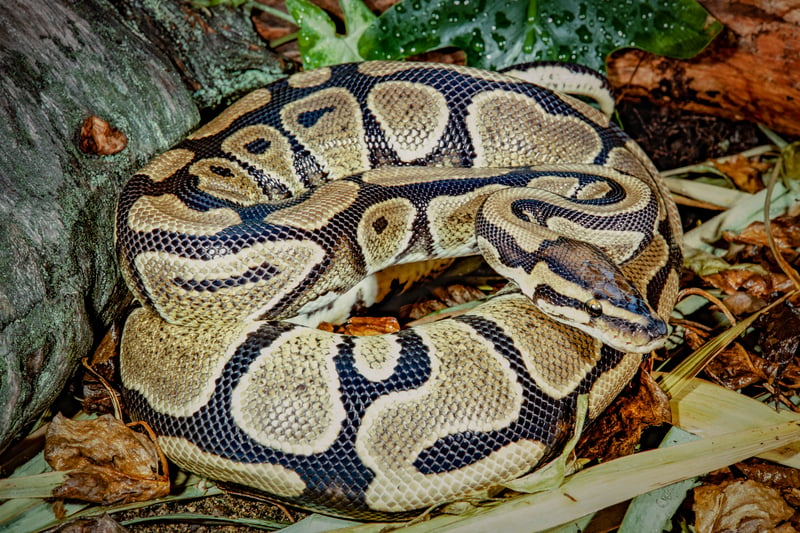
R. Andrew Odum / Getty Images
FAQs
Are python snakes poisonous?
Although python snakes have sharp teeth, they don’t inject venom into their prey. Instead, they kill by constricting them. That’s why pythons are known as “non-venomous constrictors”.
Are python snakes endangered?
There are around 40 python species, and most have declining populations. Ball pythons are near threatened because they are unethically traded as exotic pets.
What threats do python snakes face in the wild?
Python threats include hunting for the exotic pet trade and exploitation, habitat loss, and poaching. Pythons are killed so their skins can be used in fashion and traditional medicine.
Can you keep a python snake as a pet?
While ball pythons are currently kept in captivity as pets, their capture from the wild is cruel and causes great distress to these sentient animals. Even when “ranched” or “farmed”, these snakes aren’t usually given adequate welfare. Pythons have complex needs and are not suitable pets.

